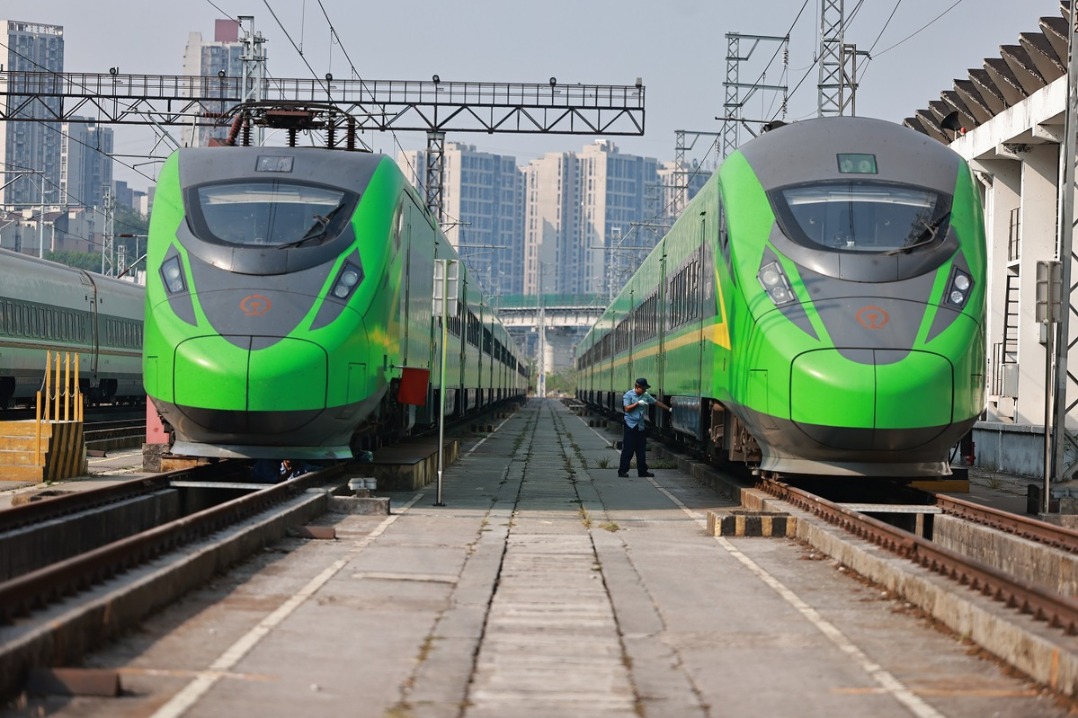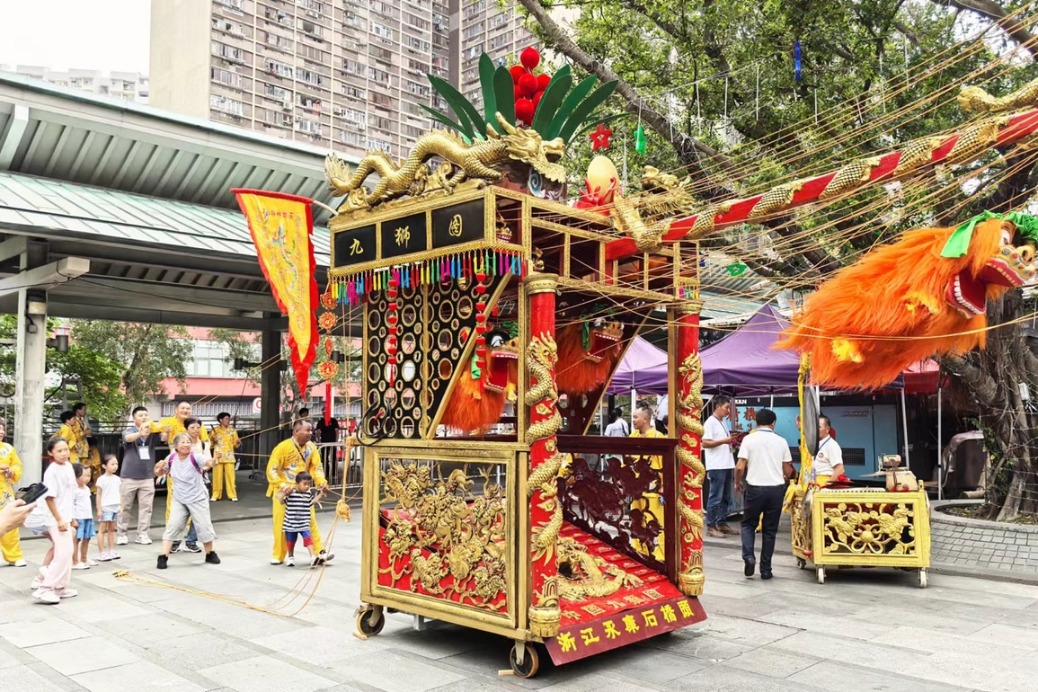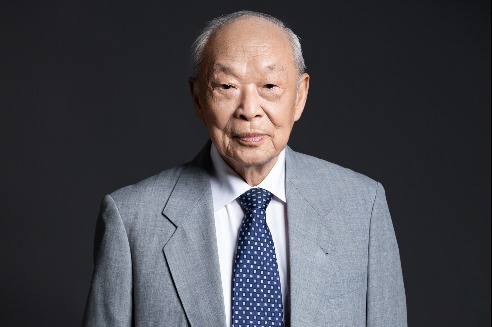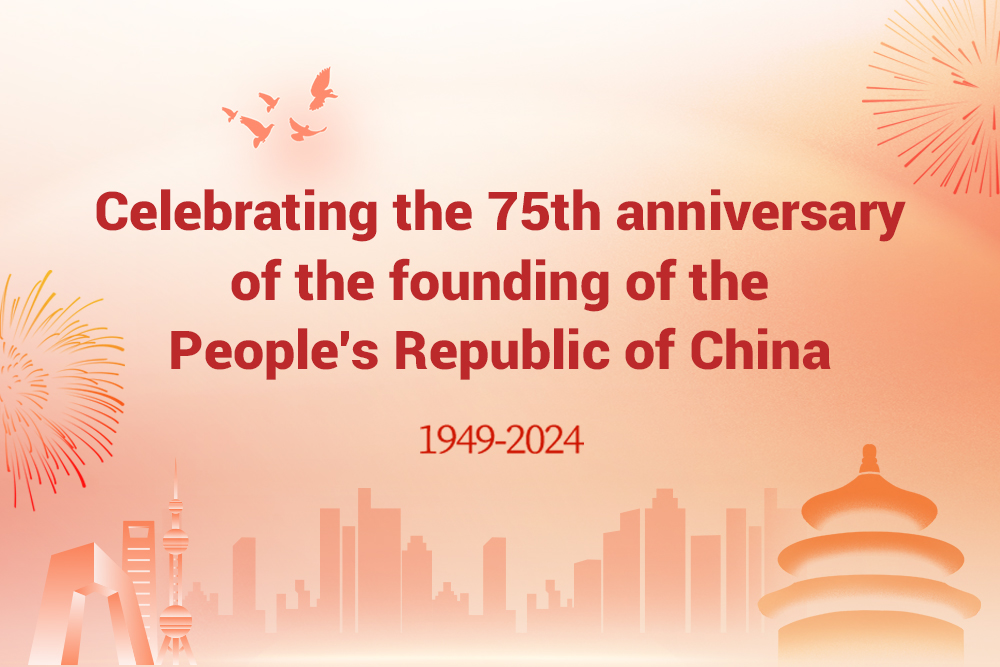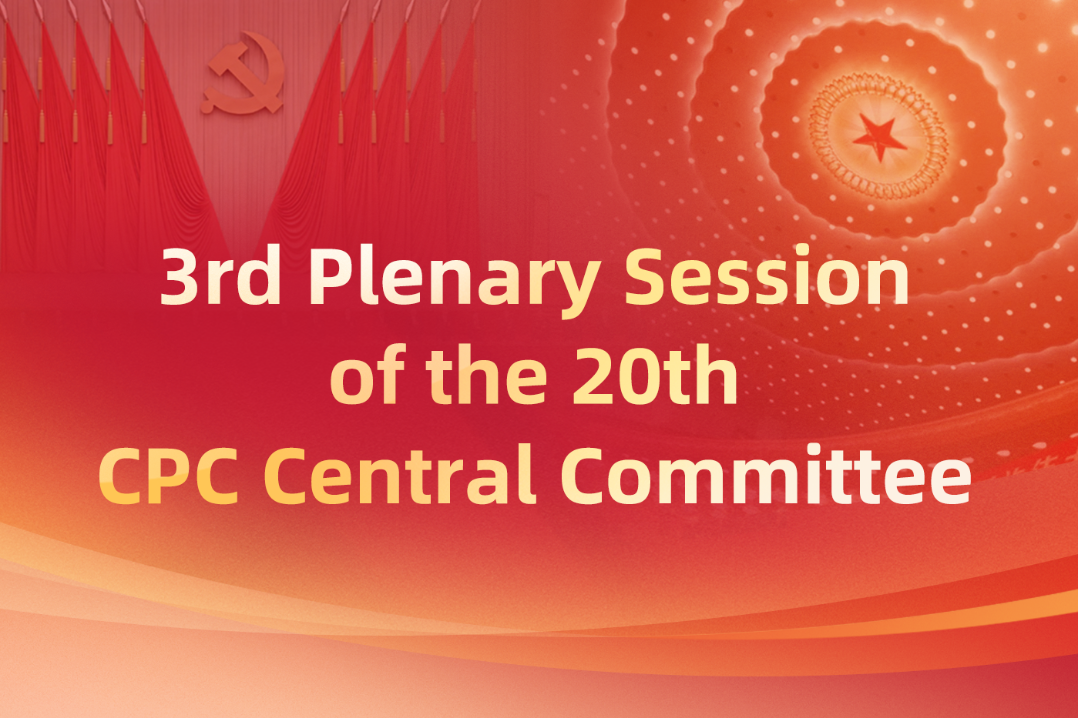Ma Rong: What is the contemporary enlightenment of the debate on 'There is only one Chinese nation' during the Anti-Japanese War?

In 1939, in the background of the Anti-Japanese War, the historian Gu Jiegang put forward the view "There is only one Chinese nation". Back then, this view led to discussion from scholars of different academic backgrounds, including Fei Xiaotong, who pointed out that it did not seem to pay attention to the diversity of various ethnic groups in China. However, even Fei, half a century later, has changed his mind. Why is that? Looking back on this debate now, what is the enlightenment to the understanding of the ethnic relations of the Chinese nation? Ma Rong, professor of sociology at Peking University, discussed the topic in an exclusive interview with China News Service.
Following is the interview record:
A debate that spanned half a century was finally solved
CNS: In your opinion, how to understand the time and space background when historian Gu Jiegang put forward the view "There is only one Chinese nation" more than 80 years ago? About this view, Fei xiaotong did not agree at that time, but changed his mind later. How do you interpret his change?
Ma Rong: In 1939, Gu Jiegang published an article entitled "There is only one Chinese nation" in the 9th issue of Social Welfare (February 13, 1939). The article clearly poined out that, according to the modern political concept, there was only one "nation" in China, that was "Chinese nation" (Zhonghua minzu), and the " 5 major groups" should not be titled "minzu" (nation). Moreover, to refer to Han, Manchu, Mongolian, Hui, Tibetan and other groups as "nations" was an strategy and plot which used by imperialist to divide and disintegrate China.
At that time, Japan had established the "Puppet Manchu State", encouraged the establishment of the "Inner Mongolia Autonomous Government", and even invited Ma Lin, Ma Bufang's uncle, to Beijing to plan the establishment of the "Northwest Muslim State" in Gansu, Qinghai and Ningxia areas. In this grim situation, Gu's concerns were not unfounded. He had visited the prince of Inner Mongolia in Chahar, tried to persuade him to give up the idea of "Mongolia autonomy". He then witnessed the ethnic rift in the northwest caused by the rivalry between the Hui and Han groups. Therefore, from the great real risk of national disintegrating and the people of all ethnic groups hurting each other, he first realized that we must emphasize the unification of the "Chinese nation". Refer to Han, Manchu, Mongolian, Hui, Tibetan and other groups as "nations" is a strategy used by imperialists to promote "national self-determination" and "national independence" for the purpose of disintegrating China. Some Chinese scholars who blindly accept western ideas echoed it, which made Mr. Gu more worried. That's why he wrote the article.
In the subsequent article, Gu wrote: "I am living in the most dangerous times China has never experienced. My experience is the experience of the border people who have suffered and been bullied whom I had personally contacted with. I am patriotic, sympathetic. I have to say it." In reading these articles of Mr. Gu, what impressed me most was not only his knowledge and reputation, but also his patriotism.
Fei Xiaotong majored in anthropology in Tsinghua University and when he studied in Britain. According to the basic concepts and discourse systems developed by western anthropologists in their study of Asian, Africa, and Latin American colonies, Dr. Fei naturally assumes that the Han, Manchu, Mongolian, Hui, Tibetan, Miao, Yao groups in China with different ancestors, language, and cultural traditions should all be regarded as "nations". When anthropologists examine and study different human groups, they value their cultural traditions more than their political identities, and they focus more on the differences between different people rather than their commonalities. So Dr. Fei, who had just returned China from England at that time, wrote an article disagreeing with Mr. Gu.
In 1939, at the age of 46, Professor Gu Jiegang was very influential in the field of Chinese history because of his publications of Discussions in Ancient Chinese History. He was familiar with the historical documents which recorded the evolution of the unified Chinese nation for over 2000 years, and his understanding of China as an integrated political entity was deeply rooted. At that time, Fei Xiaotong was just 29 when he left university. Influenced by the western anthropological tradition which focused more on the difference of groups, he worried that the culture, language, and physical diversity that anthropological focus on would be overlooked. On the theme of "there is only one Chinese nation", the debate between these two scholars of different ages and life experiences, different academic backgrounds, different research experiences and different key concerns can tell us many important enlightenment beyond their specific views.
However, nearly half a century later, professor Fei Xiaotong put forward the famous theory of "The Pattern of Pluralistic Unity of the Chinese Nation" in The Chinese University of Hong Kong in 1988. He explained that in the long history, "After contact, mixing, connection and fusion, as well as fragmentation and extinction, many ethnic units in scattered places have formed a pluralistic unity which is not only inclusive, but also let them retain their group diversities. These ethnic units finally formed into a national entity which became the Chinese nation by national consciousness. Under the pressure of joint resistance to western powers, a self-conscious national entity which share joys and sorrows was formed."
I think, after 50 years, Professor Fei basically accepted the key concept of "Chinese nation" and its characteristics and development process described by Gu in 1939. He defined "Chinese nation" as a self-conscious "national entity". "I would use the term Chinese nation to refer to the one billion people who now have a common national identity in China," Fei said, "It includes more than 50 ethnic groups which are diversified, but also is an integrated Chinese nation." This can be seen as his conclusion to the debate.
China is different from other multi-racial and multi-ethnic countries
CNS: Compared with other multi-ethnic and multi-racial countries as US and India, what do you think are the differences in the history of development and interaction between the different ethnic groups in China? What are the characteristics of ethnic relations in China?
Ma Rong: The world's multi-racial, multi-ethnic countries can be roughly divided into three categories. The first is the European countries. After the 17th century, Europe established the new world order with "nation state" as the political entity with the signing of the Treaty of Westphalia in 1648. With different degrees, people who speak different languages and believe in different religions live in these "nation states". However, in the process of "nation-building", the central governments of these states have strengthened and deepened the people's political identity to the countries.
The second is the new countries (US, Canada, Australia and New Zealand) established by white colonists successively in the colonies of European countries in the past. Indigenous groups, other non-white immigrants and white immigrants came from different European countries made these countries into multi-racial and multi-ethnic political entities.
The third is the emergence of lots of new countries (India, Indonesia, Myanmar, etc.) in the former colonial territories of Asia, Africa and Latin America as a result of the colonial independence movements after World War II. These countries have developed multi-ethnic populations since colonial times. The formation of these three types of countries is different, and each has its own characteristics in identification mode.
China is different form these 3 categories. At least since Qin and Han dynasties, with the core area in the Central Plains, China has formed a political entity with frequent changes of border and dominant group of central government. This political entity has a "unified" cosmological view, a civilization system with "Chinese culture" (Chinese civilization) as the core, and a group communication order of "harmony without uniformity" and "teaching without discrimination". Although there have been many vicissitude of dynasties, the ethnic origin of the Central Plains royal families also changed, after all kinds of social changes and shocks, this political entity has always maintained the development trend of "Separate after long time united. Also will be unified again after long time splitting". The main vein of the core thoughts of this cultural system originated from Confucianism and other schools of thought (the hundreds schools of thought) in the Spring and Autumn period and the Warring States Period. It was an ideological system with unique cosmology and social ethics developed in the debate and competition among all schools.
Compared with many other civilizational systems in the world with religion as the core, the most important essential feature of the Chinese civilization system is its secularity. This is very different from the ideology based on monotheism (Christianity, Judaism, Islam). Prof. Ambrose King, a sociologist of Chinese university of Hong Kong, believes that China is different from any other "nation-state" in modern times. "China is an independent political culture entity differentiated by culture rather than race, or can be referred as 'civilizational state', with a unique civilized order." Prof. Lucian Pye of M.I.T. thought "China is a civilization pretending to be a state". This can explain to some extent that the "mulit-ethnic phenomenon" in China is obviously different from the above mentioned three types of countries in the root. The concept of "nation" and nationalism, which originated in Europe, is some kind of national ideology with "zero-sum structure" and strongly exclusive group identity. In the soil of Chinese civilization, the concept of "nation" similar to the western discourse cannot emerge, nor can the ideology of "nationalism" which generated in the western style.
The emergence of discussions on the concept of "nation" and "nationalism" in Chinese society is mainly due to the influence of western knowledge system and discourse concepts after the Opium War. Emphasizing on "casting the community consciousness of the Chinese nation" nowadays as the main line and direction of China's national identity in the new era is, to a large extent, a return to the Chinese political and cultural tradition under the new historical conditions. This tradition has sustained the continuation and development of China's political entity for more than 2000 years, which is very rare in world history.
From Diversity in Unity to Community Consciousness
CNS: Although various ethnic groups in China differ in appearance, dress, customs and many other aspects, the "big family" is often used as a metaphor for the relationship between ethnic groups in China. In your opinion, why China is able to form this kind of "big family" relationship? Why do we have the confidence to "cast the community consciousness of the Chinese nation"?
Ma Rong: In the course of historical development, many groups within the Chinese national community have still preserved many characteristics. Due to the trans-regional migration and inter-ethnic marriage in history, some ethnic groups have formed their own characteristics in physical constitution, dress, language, religious belief and customs. Some of these characteristics are pronounced, but others are barely distinguishable. According to Prof. Fei Xiaotong, "from the biological basis, or the so-called 'descent', it can be said that the integrated Chinese nation is often mixed and fused, no one group within it can be said to be 'pure blood' in terms of descent." "The Pattern of Diversity in Unity of the Chinese Nation" put forward by Prof. Fei is very helpful in understanding the differences that exist among the various ethnic groups in China today. This is the historical basis and operating mechanism for the continuous consolidation and development of "A Community for The Chinese Nation" today, and it's also our confidence for "casting the community consciousness of the Chinese nation".
In the course of imperialist aggression in modern times, it is true that there were some separatist thoughts and activities among some ethnic groups in China, because at that time the Chinese people were not united enough and the state was not strong enough. Nowdays, we have the determination, confidence and strength to safeguard national sovereignty and security, and we will complete the final reunification of the mainland and Taiwan.
State universal language education reflects the process of modernization
CNS: At present, some western media often accuse the Chinese government's effort to accelerate the modernization of ethnic minority areas as the destruction of ethnic minorities' original lifestyle, such as attacking China's universal education in the spoken and written Chinese language. How do you think about it?
Ma Rong: If a country needs to promote its industrialization and modernization, it is necessary for all citizens to have a common language tool that is conducive to learning and mastering modern scientific and technological knowledge. It is also necessary to learn and master a common language that is easy for people to communicate in the domestic labor market and employment environment. Therefore, all countries in the world are promoting their own "national common language education" in various ways, or it can also be called "national language education". This is an objective requirement for the development of the state and society, and also an objective condition for every citizen (including those of ethnic minorities) to actively participate in the construction of the state and fulfill personal development. After the abolishment of "imperial examinations and the promotion of new schools" in 1905, coupled with the development of modern school education for more than 100 years, China's national language (Chinese Mandarin) textbooks and teaching materials for various subjects have been quite mature. It is proved that the professional level of Chinese primary and middle school education can stand up to international comparison. In contrast, modern education in ethnic minority areas in western China started relatively late. For example, there was no modern primary school in Lhasa before 1952. The compilation of mathematics, physics, chemistry and other textbooks in minority languages requires not only native experts in each subjects, but also the support of a market which is big enough. Therefore, the fact of the matter is the quantity and quality of Uyghur, Mongolian, Kazak and Tibetan textbooks cannot meet the requirements of young students of minority groups to learn modern knowledge. In addition, a large pattern of cross-regional labor force mobility has formed in China, in order to help the western minority to learn and master modern knowledge and to get jobs outside their native places, learning and mastering the national language is a basic condition. Some people criticize China for promoting the national language education in the western regions, which is totally absurd. The governments of these countries also promote their own national language education. For example, without English skills, you can do nothing in US. However, there is no conflict between learning and mastering the national language and inheriting the mother tongue and traditional culture of the ethnic minorities.
Just think about it, if a Tibetan youth can only speak Tibetan, it is very hard for him to live in the urban area. Because he cannot speak Mandarin, he doesn't have access to a lot of knowledge and information that Tibetan language programs don't have in TV and internet. He also cannot shop or sell his own products through mandarin websites. Furthermore, his space of activity is bound to be extremely limited, which is very disadvantageous to the development of himself and his family. Young people of ethnic minorities have every right to join the modernization process of the state and society. Meanwhile, they will be better to inherit and protect their traditional culture.
The author Ma Rong, born in March 1950, is of Hui ethnic group. He worked in Dongwu Banner, Inner Mongolia, between 1968 and 1973 as a herdsman during the Cultural Revolution. He received his PhD in sociology from Brown University in 1987 and returned to China to teach at Peking University in the same year. He used to be the director of the Institute of Sociology and Anthropology, Chair of the Sociology Department at Peking University. He is now a Peking University Boya Chair professor. His publications in English include: Ethnic Relations in China (China Tebetology Publishing House, 2008), Population and Society in Contemporary Tibet (Hong Kong University Press, 2011), he also published several books in Chinese language focusing on Studies of ethnic relations, minority education and rural development in western China.
- Grand ceremony marks Confucius' birthday in Zhejiang
- China to see cooler weather but favorable travel conditions over National Day holiday
- Music video showcases Wuxi's heritage, progress
- Expert: Raising retirement age unlikely to affect employment opportunities
- Pingtan center a key stop for Taiwan compatriots seeking mainland qualifications
- Over 5,000 artists to take part in Shanghai festival

















